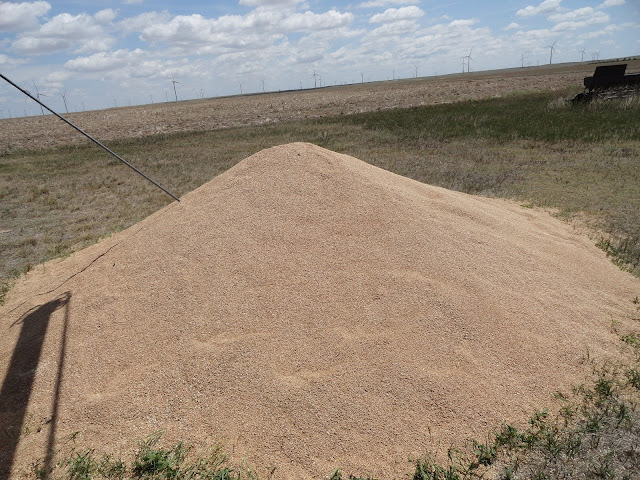Twenty-twenty is good vision. But 2020 has not been a very good year.
As we pass through the midpoint of the year,
2020 continues to misbehave. It shows no
sign of reforming.
Harvest 2020 was not the worst harvest on
record. Too many candidates vie for that
position. Various hail years spring to
mind where the combine driver could look down and see plenty of wheat seeds on
the ground, with no way of collecting them, while a sicky trickle of seeds
drizzled into the combine’s grain bin.
Or a year in the late sixties when wheat
badly hailed in May “suckered out” and offered to rejuvenate itself. We sprayed with 2-4D to kill the weeds. Then we swathed the crop when the weeds
proved to be too much for the combine.
We spent a day with Dad on the tractor and me on the old Number 3 John
Deere picking up the windrows.
After we had done 40 acres and barely had
150 bushels of wheat (and a bunch of dried weed chunks about wheat kernel size)
to show for it, we gave the crop up for lost.
When Dad hauled it to the local grain elevator, Dick had him dump his
load in the cleaning mill. Dick said we
could use it for seed. Which we did.
That was the last time the old Number 3
ran. Some years later, a wind storm
knocked off the exhaust and air intake pipes.
Water got into the motor and it is now rusted in place. I always thought I would restore the old gal,
but that seems more and more remote as time passes.
A truck driver who came to haul the 2019
crop suggested I donate the Number 3 to a museum somewhere, He had never seen a combine like that. He said folks should be able to see it.
Well, I digressed. Problems with the 2020 wheat crop began in
September of 2019, when I planted it. It
should have come up better, as I put it in ample moisture, but hot windy days
ensued before the crop could germinate.
The “stand” was spotty.
Some, not all, of the seeds that didn’t grow
in the fall, took off in the spring after skimpy snow storms filled the rows
with some moisture. Those plants were a
week to ten days behind that which germinated last fall. Meanwhile, weeds filled the blank spaces.
At harvest time, those plants that grew
in the fall were ripe, but the spring-germinated plants were still green. I was able to harvest maybe 50 or 60 acres. Then I had to wait for the rest of the crop
to ripen.
Meanwhile, the weeds gained in
stature. The usual harvest monsoon asserted
itself in .2” or .3” showers every other day or so. And the weeds grew. I could not spray them and retain my organic
status.
So when I did get to harvest the
late-bloomers, I had to take in quite a few weeds with the wheat. The one positive out of it, 100-degree days
with wind dried out the weeds. They went
through the combine with a minimum of trouble when it was hot and breezy. I left maybe 40 acres because the wheat wasn’t
worth dealing with the very rank weeds.
Because of the weeds, the moisture content
of the grain was higher than I like for it to be to put it in the bin, so 150
bushels or so remain in a pile on the ground.
I will load it up and take it to town with the wheat from the buffer
zones I am required to keep separate from the “organic” crop.
It ain’t over till the fat lady sings,
which in this case means it won’t be over until the combine is cleaned and
shedded. Cleaning the combine, never
much fun, will be worse than usual due to the frequent inconsequential rain
showers.
The moisture combines with the dust,
chaff, straw and beards to form a paste.
When it dries, it sticks.
Compressed air can remove dry dust and chaff, but the “paste” has to be
scraped off with a putty knife.
The cleansing and storing of combine has
been delayed while I attack weeds in the summer fallow. And so it goes.
I told one of my neighbors we musn’t
expect two good crops in a row. 2019 was
the best crop I have ever raised. And
then along came 2020.
Most oft-repeated phrase in the
neighborhood: “Sure could use a rain.”




No comments:
Post a Comment